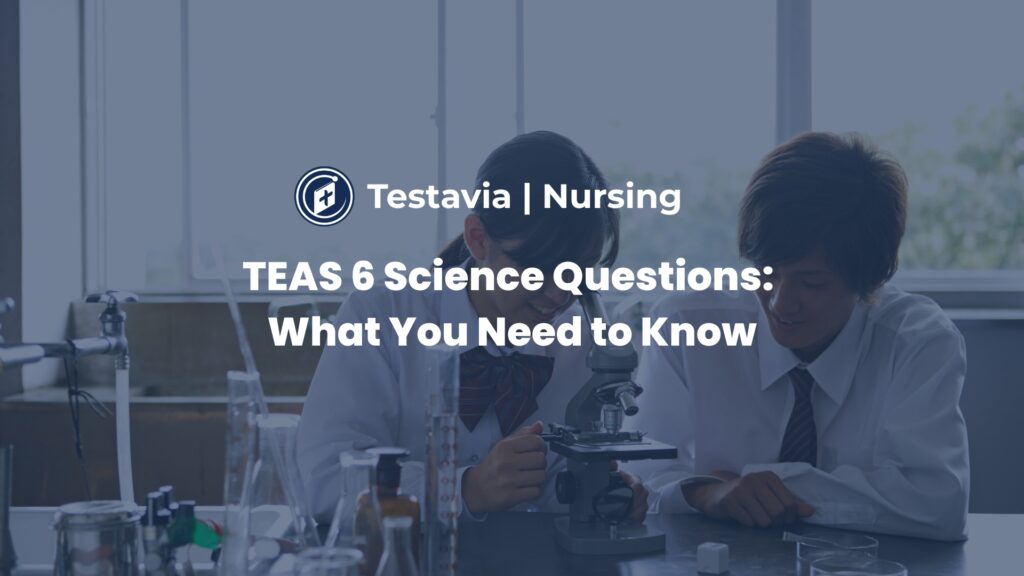
Walking into the TEAS test, many students feel the science section is the most intimidating part of this crucial nursing entrance exam. It’s a comprehensive part of the test that covers a wide range of complex topics. If you’re feeling a little overwhelmed, you’re not alone. The key to conquering this section isn’t just about memorizing facts; it’s about understanding concepts and knowing how to apply them. This guide is here to break down the TEAS 6 Science section, helping you understand what to expect and how to prepare effectively.
The science portion, administered by ATI testing, is designed to assess your readiness for the rigorous science courses you’ll encounter in nursing school. We’ll explore the topics you’ll face, common hurdles students encounter, and practical tips to help you study smarter, not just harder.
What Topics Are Covered in the TEAS 6 Science Section?
The TEAS Science section consists of 53 questions that you need to answer in 63 minutes. It’s a race against the clock, so knowing the content inside and out is essential. The questions fall into three main categories:
- Human Anatomy and Physiology: This is the largest part of the science section. You can expect questions on all major body systems, including the cardiovascular, respiratory, nervous, digestive, and immune systems. A solid understanding here is non-negotiable.
- Life and Physical Sciences: This category covers foundational biology and chemistry concepts. You’ll see questions about macromolecules, cell theory, DNA, and basic atomic structure. It’s a broad area, so a good review of your high school science classes is a great place to start.
- Scientific Reasoning: This part tests your ability to think like a scientist. You’ll be asked to interpret data from graphs and charts, understand experimental design, and evaluate scientific arguments. It measures your critical thinking skills rather than rote memorization.
While you’re focusing on science, don’t forget that a strong foundation in other areas helps. For instance, solid reading skills are needed to understand the questions, and a good grasp of concepts from ati teas 6 math can help with data interpretation.
Common Challenges Students Face with TEAS Science
It’s one thing to know the topics, but it’s another to understand why so many students find this section difficult. One of the biggest challenges is the sheer volume of information. Covering multiple years of science education in a single test is a tall order. Many students haven’t looked at topics like basic chemistry or cell biology since high school, so the material feels foreign.
Another hurdle is the integrated nature of the questions. A single question might require you to pull knowledge from both anatomy and biology to arrive at the correct answer. This is where scientific reasoning comes into play. You can’t just recall isolated facts; you must connect them.
Finally, time pressure is a significant factor. With just over a minute per question, there’s little time to second-guess yourself. If you’re not confident in a topic, it’s easy to get stuck and lose precious minutes. This is why using an ati teas practice test under timed conditions is such a valuable preparation strategy. It helps you build the mental stamina and pacing needed for test day.
Top Tips for Preparing for TEAS Science Questions
Feeling prepared can make all the difference. Instead of aimlessly reading textbooks, adopt a structured approach to your studies.
- Start with a Diagnostic Test: Before you dive in, take a free ati teas practice test. This will give you a baseline score and, more importantly, show you exactly which areas need the most work. There’s no point spending weeks on the respiratory system if your real weakness is in physical science.
- Create a Realistic Study Schedule: Don’t try to cram everything in a week before the exam. Break down the science topics into manageable chunks and dedicate specific days to each one. Consistent, focused study sessions are far more effective than long, draining ones.
- Use Visual Aids: For subjects like anatomy and physiology, visual aids are your best friend. Use flashcards with diagrams, watch educational videos, and draw out biological processes yourself. Engaging with the material in different ways helps solidify your understanding.
- Don’t Neglect the Basics: It can be tempting to focus only on complex anatomy, but make sure your foundational knowledge of general biology and chemistry is solid. These concepts often appear in unexpected ways.
Remember that the TEAS test as a whole is designed to measure your academic readiness. While science is a big piece, don’t forget to practice other sections, like the ati teas english questions, to ensure you’re well-rounded.
How to Master Human Anatomy and Physiology Questions
Since Human Anatomy and Physiology makes up the bulk of the science section, dedicating extra effort here will pay off. This subject is all about systems and how they interact.
First, study one body system at a time. For example, spend a few days focused solely on the cardiovascular system. Learn its major structures (heart, arteries, veins), its primary functions (transporting oxygen and nutrients), and how it connects to other systems, like the respiratory system.
Next, focus on cause and effect. Instead of just memorizing that the pancreas produces insulin, understand why it does. What happens in the body to trigger insulin release? What is the effect of that release on blood sugar? The TEAS questions will often test these “if-then” relationships.
A great way to learn is to explain the concepts out loud to someone else, or even just to yourself. If you can teach it, you truly understand it. This active recall method is far more powerful than passively reading notes.
Best Practice Resources for the TEAS 6 Science Test
You don’t have to prepare for this nursing entrance exam alone. There are tons of excellent resources available to guide your studies.
The official study materials from ATI testing are the gold standard. The ATI TEAS Study Manual is specifically designed for the exam and outlines everything you need to know. ATI also offers online packages that include an ati teas practice test and detailed lesson plans. Since ATI writes the test, their materials are the most accurate reflection of what you’ll see on exam day.
Beyond official resources, look for reputable online sources. Websites like Khan Academy offer free, in-depth video lessons on almost every topic in the science section. Educational YouTube channels are also fantastic for visualizing complex processes.
What you need to ace your TEAS 6 Science Exam
Finally, practice is everything. Incorporate as many practice questions into your routine as possible. Start with a free ati teas practice test to get comfortable with the format, and consider investing in a package of practice exams as you get closer to your test date. Simulating the testing experience will build your confidence and ensure there are no surprises on the big day.

IBlog comment creation guide like how you emphasized that the science section is more about applying concepts than just memorizing facts—it’s easy to overlook that. One strategy that helped me was connecting anatomy and physiology topics to real-life scenarios, like how the body reacts during exercise, which made recall much easier. Have you found any specific approaches that work well for tackling the scientific reasoning questions?